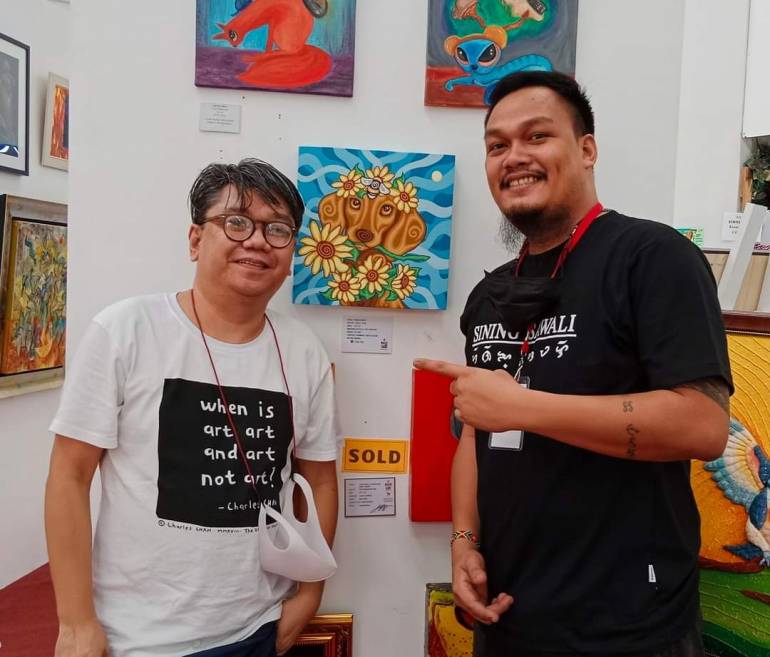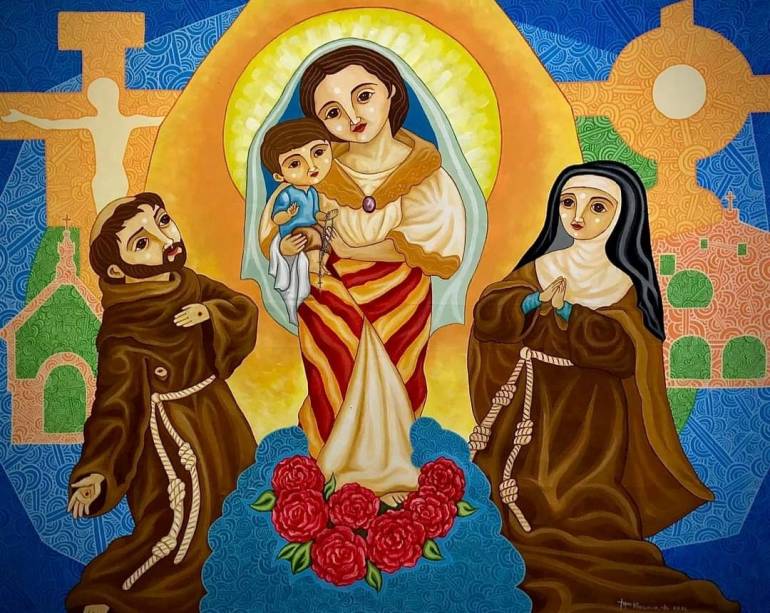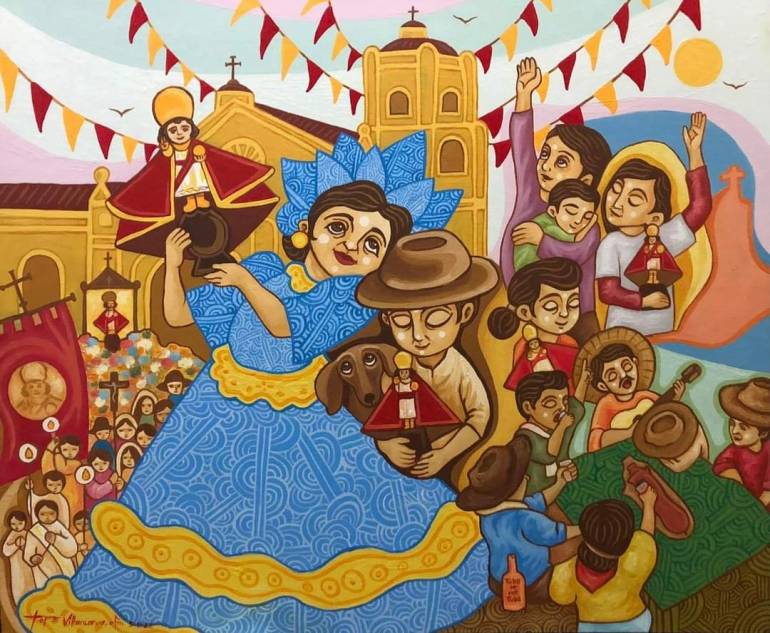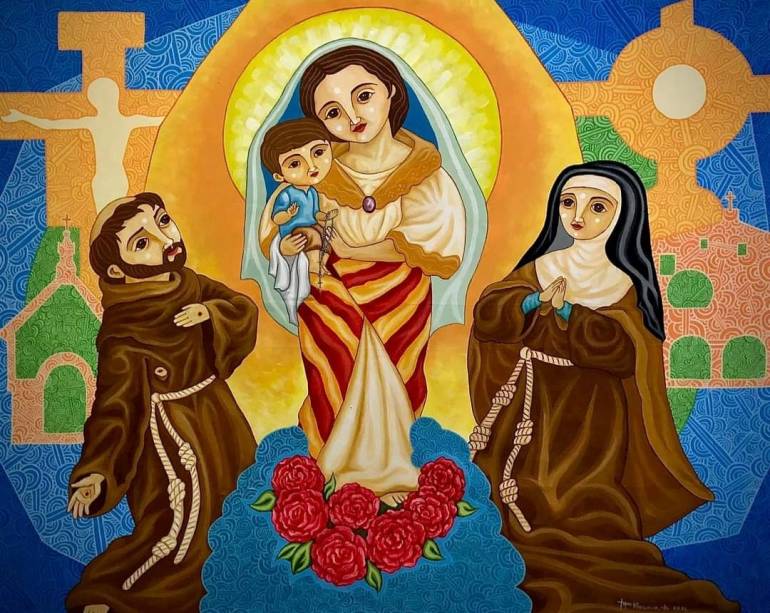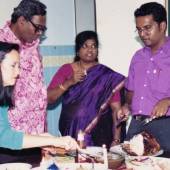Franciscan brother uses art talent to rekindle hope in kids who survived war, calamities
Not wearing any habit, but clad in casual clothing, Bro. Tope Villanueva traveled to Basilan and Marawi as a volunteer to help bring hope to Muslim children who survived the war between the Moro rebels and the Philippine armed forces.
Kids who witnessed bloodsheds
Basilan is an island province more than 1,400 kilometers south of Manila, the country's capital. Marawi, on the other hand, is a city more than 1,200 kilometers south of Manila.
The battle between Abu Sayyaf, a Jihadist militant group that adheres to the Wahhabi doctrine of Sunni Islam, and the military in 2014 claimed the lives of at least 39 people and wounded 59.
The Marawi Siege, which involved the military and Islamic State, claimed the lives of more a thousand and also left no less than a thousand wounded.
"Children lost their homes and family members," Villanueva said. "They have witnessed their loved ones died. It's really traumatic for them"
The children were all Muslims, the Franciscan noted. So, he and other volunteers were careful in giving art therapies and workshops.
The children spoke local dialects only, he said. They spoke Maranao in Marawi, while the kids spoke the Yakan tongue and a few Tagalog in Basilan.
"The good thing, there were local volunteers who served as interpreters," Villanueva said. "We from the Church just wore casual clothing and introduced ourselves as volunteers."
Villanueva and other volunteers informed the children that they have come over to teach them how to draw, sing, and play.
"We didn't directly told them that we were doing art therapy," he said. "But actually the activities were art therapies, especially during the art sessions."
Villanueva uses the proceeds from his paintings to offer art therapies and art workshops to children who survived war and calamities. He joins art exhibits, like in Manila.
"During the art workshops, we asked the children what was their life before the war broke out," he said. "What were their dreams in life, and what were the war experiences they couldn't forget."
The kids were encouraged to express their thoughts and emotions on their war experience.
"The trauma reflected in their artworks," Villanueva said. "Some wanted to avenge family members who died. Others wanted to become health volunteers to help the wounded."
Villanueva and his fellow volunteers made clear to the children that vengence is not a good idea. The kids realized taking revenge was bad and that protecting and helping the oppressed were better ideas.
"Once they realized it, we brought up the idea of peace and encourage them to be peace-loving citizens," Villanueva said. "We also encouraged them to study well and pursue their dreams so that they could help children who would experience that things they did."
Kids stormed by calamities
After Typhoon Odette (Rai) struck parts of Visayas and Mindanao a few days before Christmas in 2021, Villanueva and fellow artists -- including priests, nuns, and lay -- staged an art exhibit to raise funds for the survivors.
"We called it PinTabang," he said. "Many had responded, making the event successful."
PinTabang is a local portmanteau, meaning paint and help.
They also held online art exhibits during the pandemic.
The funds raised from the art exhibit were used for relief goods, medical missions, and stress debriefing in island barangays in Surigao del Sur that was not easily accessible due to distance.
They also brought hope to children in Cagayan Valley.
Typhoon Odette was the second most devastating storm in the country's history in terms of destruction to properties, leaving estimated damages amounting to $1 billion. It claimed the lives of more than 400 people.
Yolanda (Haiyan) was the costliest typhoon to strike the Philippines, causing over $2 billion in property damage.
"Our mission in typhoon-hit areas helped to manage trauma among children," Villanueva said. "We saw smiles on their faces. We also encouraged them to study well and pursue their dreams."
Radio Veritas Asia (RVA), a media platform of the Catholic Church, aims to share Christ. RVA started in 1969 as a continental Catholic radio station to serve Asian countries in their respective local language, thus earning the tag “the Voice of Asian Christianity.” Responding to the emerging context, RVA embraced media platforms to connect with the global Asian audience via its 21 language websites and various social media platforms.





